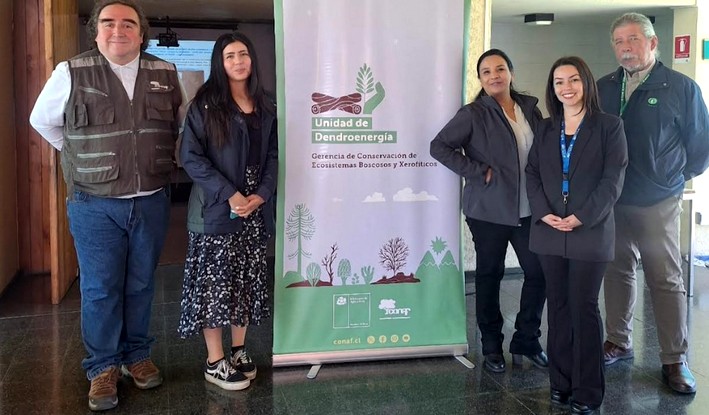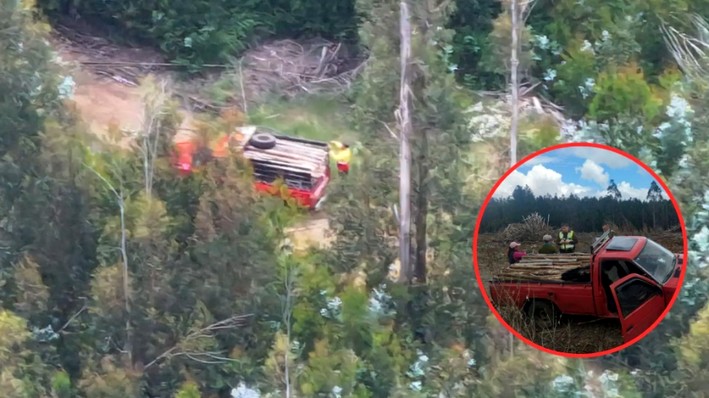Wildfires in Chile devastate 56,000 hectares, primarily natural vegetation
Ramón Figueroa, Deputy Manager of Forest Fire Protection at Arauco companies and President of the Forest Protection Department of Corma, detailed in a conversation with Acoforag the damage caused by wildfires in different regions of Chile. He classified the affected areas into plantations, natural vegetation, and other surfaces, as of March 2 of this year.
1. Total number of fires
• 4,846 fires were recorded nationwide, of which 3,601 occurred in the "Macrozone" (which includes some of the most affected regions).
• La Araucanía and Biobío are the regions with the most fires (918 and 938, respectively).
2. Total damaged area
• Nationwide, wildfires affected 56,255 hectares, of which:
o 41,087 hectares (73%) correspond to natural vegetation.
o 9,307 hectares (17%) are forest plantations.
o 5,861 hectares (10%) correspond to other surfaces.
• In the Macrozone, the total damage was 47,941 hectares, with a similar distribution:
o 33,118 hectares (69%) of natural vegetation.
o 9,061 hectares (19%) of forest plantations.
o 5,761 hectares (12%) of other surfaces.
3. Most affected regions by damaged area
• La Araucanía is the region with the largest affected area, with 29,315 hectares, of which 21,886 hectares (74.7%) are natural vegetation.
• Biobío also suffered significant damage, with 13,879 hectares affected.
• The regions of Ñuble and Maule show lesser impacts compared to Biobío and La Araucanía but are still relevant.
4. Impact on natural vegetation
• Most of the damage corresponds to natural vegetation (73% of the national total), indicating severe harm to native ecosystems and biodiversity.
• In La Araucanía and Biobío, over 75% of the damaged area is natural vegetation, highlighting the vulnerability of these regions.
5. Impact on forest plantations
• Forest plantations account for 17% of the national total, meaning that while there is an impact on this productive sector, the greatest loss occurs in natural ecosystems.
• Biobío and La Araucanía are the regions with the most damage to plantations (4,077 and 1,475 hectares, respectively).
The majority of the affected area consists of natural vegetation, implying a severe environmental impact. La Araucanía and Biobío are the hardest-hit regions, both in terms of the number of fires and hectares burned.
The Macrozone concentrates most of the damage (85% of the national total), underscoring the severity of the wildfires in this area.
René Muñoz, Manager of Acoforag, highlighted the dire situation in La Araucanía, where the high intentionality of the fires has created an unprecedented crisis. With 918 recorded fires, the region has become the most affected in the country, not only due to the number of incidents but also because of attacks on firefighting teams.
Muñoz emphasized that it is the State's responsibility to ensure adequate conditions to combat these fires, especially when they are intentionally set. In this context, he criticized the stagnation of the wildfire bill in Congress, noting that current regulations lack four fundamental pillars: prevention, firefighting, investigation, and restoration of affected territories.
According to Muñoz, the proposed law does not address key aspects such as preventive patrols, the appointment of specialized prosecutors, or the pursuit of intentional arson. In his view, any legislation that fails to consider these factors is ineffective in addressing the region's reality. Therefore, he urged senators to reconsider the bill's approach and incorporate concrete measures to combat intentional fires, ensuring an effective response to this recurring crisis.
The program is available on Acoforag's YouTube channel:

















